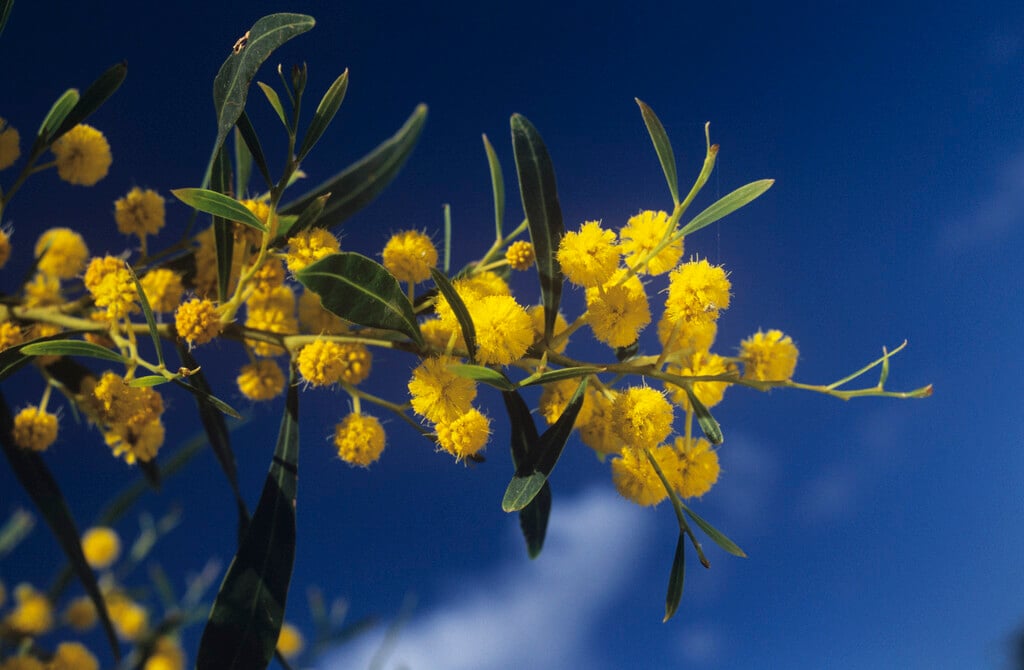Acacia saligna
golden wreath wattle
This plant is listed on Schedule 9 of the UK Wildlife & Countryside Act as an invasive, non-native species and is banned from sale. See cultivation notes for further details A fast-growing shrub or small evergreen tree, varying in height from 2 to 8m, often rather weeping in form. It has long, narrow blue- green 'leaves' up to 25cm, sometimes curved. In spring, small, round bright-yellow flowers are produced and if seed is set, brown papery pods form. It can tolerate salt winds
Size
Ultimate height
4–8 metresTime to ultimate height
10–20 yearsUltimate spread
4–8 metresGrowing conditions
Moisture
Well–drainedpH
Acid, Alkaline, NeutralColour & scent
| Stem | Flower | Foliage | Fruit | |
| Spring | Yellow | Green Blue | ||
|---|---|---|---|---|
| Summer | Green Blue | |||
| Autumn | Green Blue | Brown | ||
| Winter | Green Blue |
Position
- Full sun
Aspect
East–facing or North–facing or South–facing or West–facing
Exposure
Exposed or Sheltered Hardiness
H3Botanical details
- Family
- Fabaceae
- Native to GB / Ireland
- No
- Foliage
- Evergreen
- Habit
- Clump forming, Spreading branched, Pendulous weeping, Bushy
- Genus
Acacia can be deciduous or evergreen trees, shrubs or climbers, with alternate, pinnately divided leaves or simple modified leaf-like stalks (phyllodes), and tiny, sometimes fragrant, flowers in short spikes, or in racemes or spikes of spherical heads
- Name status
Correct
How to grow
Cultivation
This plant is listed on Schedule 9 of the UK Wildlife & Countryside Act as an invasive non-native species. Across the EU, UK and NI it is an offence to plant or cause to grow in the wild plants listed on Schedule 9 of this order. These plants should not be planted or caused to grow in the wild and in addition are banned from sale. Gardeners possessing them should undertake measures to control them. See RHS advice on invasive non-native species for further information
Propagation
Please see cultivation notes
Suggested planting locations and garden types
Pests
May be susceptible to glasshouse red spider mite, fluted scale and mealybugs
Diseases
Generally disease-free
Get involved
The Royal Horticultural Society is the UK’s leading gardening charity. We aim to enrich everyone’s life through plants, and make the UK a greener and more beautiful place.
